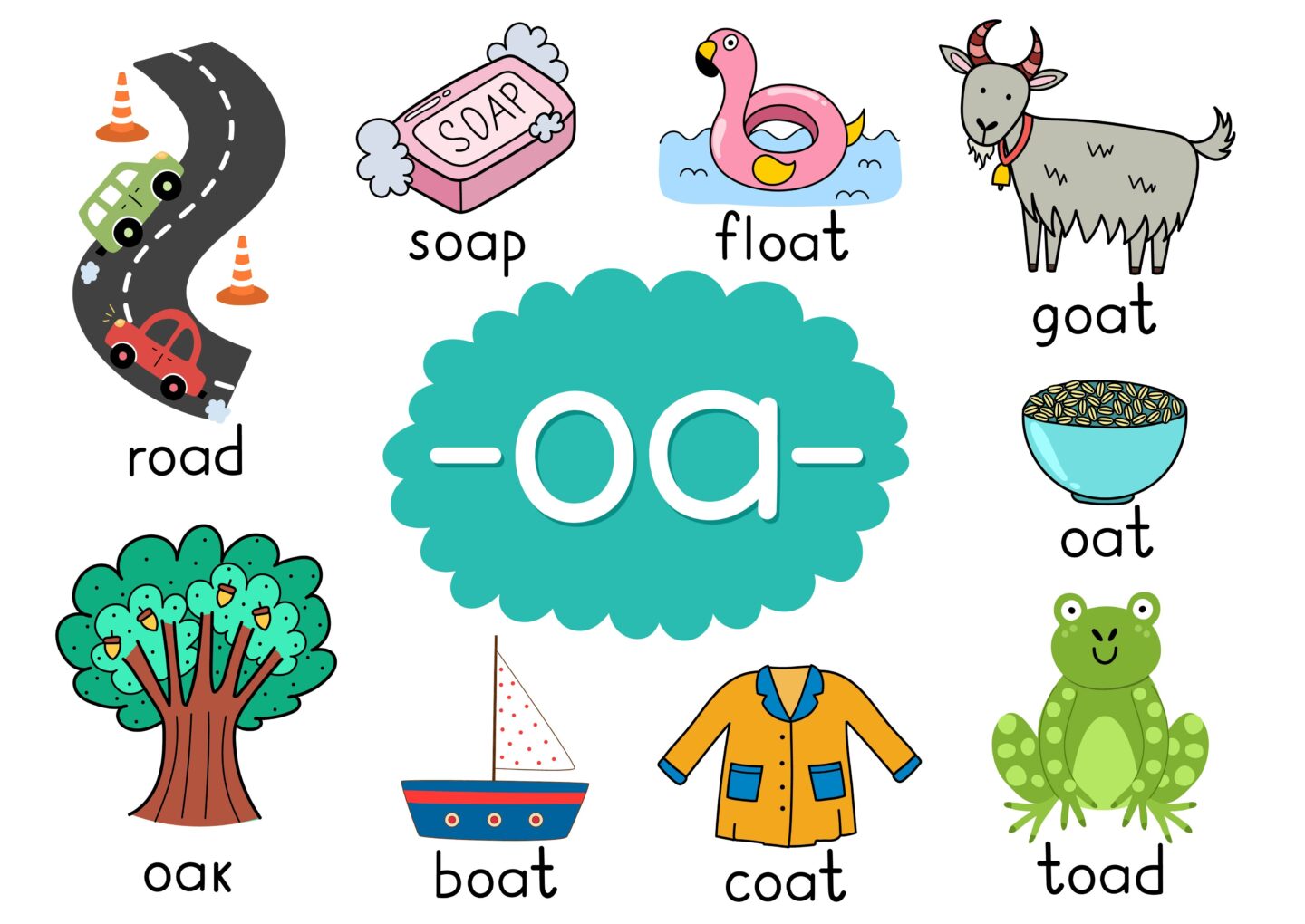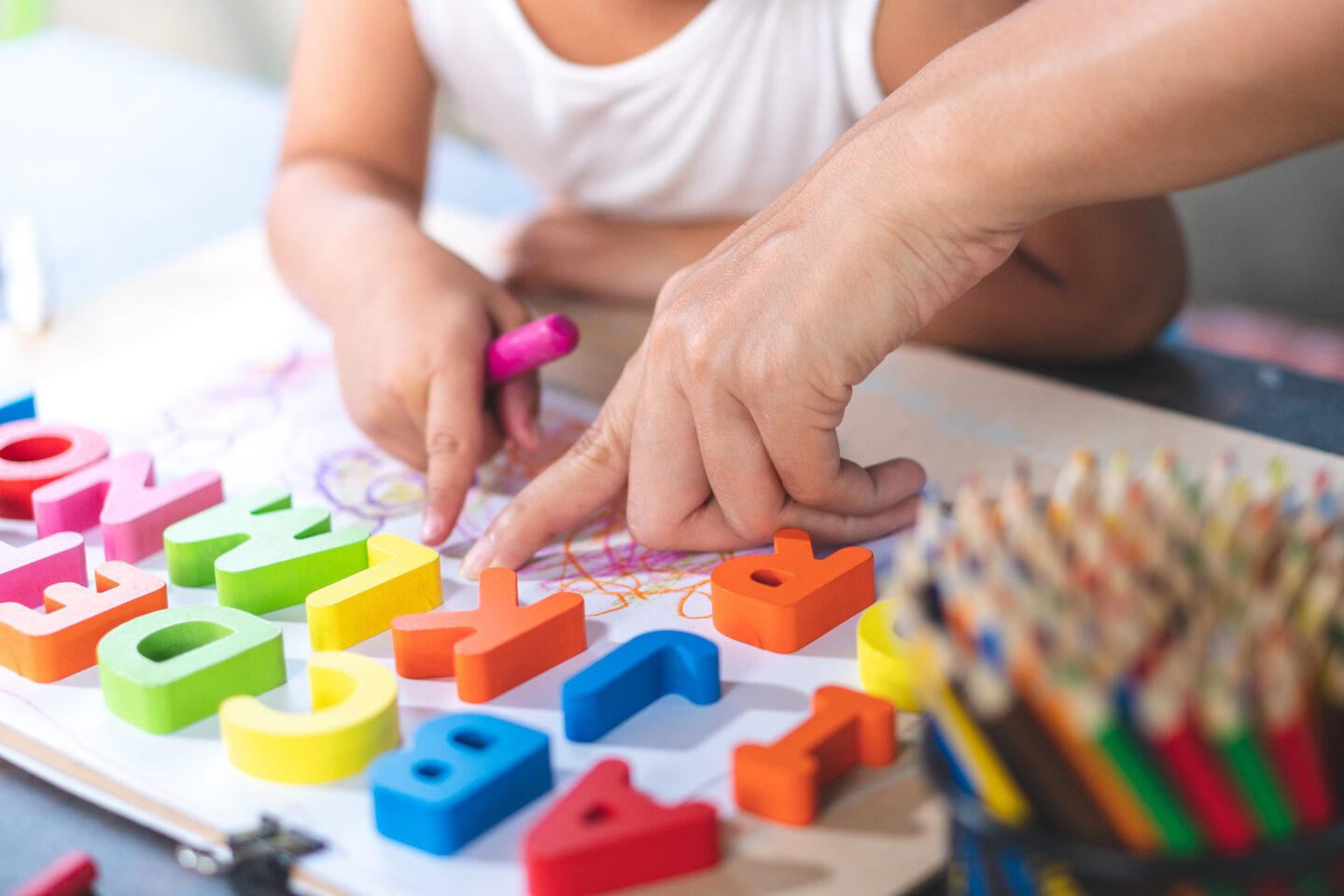
National Curriculum Support
We can help you understand what knowledge is required for the exam and support your child where they need it.
How to Teach Phonics
Learning phonics is a key stage in preparing for the 7 plus exam. Support your child in the early stages of learning to read and write. This step-by-step guide on how to teach phonics by our tutor and experienced primary school teacher Phil, takes you through the whole process.
Skip to:
- Vocabulary – what is a grapheme?
- Phonics phases
- What to do if your child is struggling
- The phonics screening check
What is phonics?
Put simply, phonics is a systematic approach to learning all the sounds of the English language and the different letter combinations which make those sounds. The overarching aim of phonics is to teach children the reading skill of ‘blending’ sounds together to read words. Children throughout the UK are taught phonics, usually on a daily basis, from the time they start in nursery or reception class. At the end of Year 1, children take the phonics screening check, which assesses their mastery of phonics.
The vocabulary of phonics
There is quite a lot of terminology specific to phonics, which can be off-putting for parents: grapheme; phoneme; segmenting; blending; digraph; split digraph; trigraph.
Grapheme – letters representing sounds. These can be single letters or a combination of letters (ch, th, sh).
Phoneme – sounds created by graphemes. Words can be segmented into phonemes, e.g. dog can be segmented into d-o-g (three phonemes); chat can be segmented into ch-a-t (three phonemes).
Segmenting – this means breaking up words into their constituent phonemes. When presented with a new word, children are encouraged to ‘segment’ it. E.g. ‘changing’ can be segmented into ch-a-n-g-i-ng.
Blending – this refers to saying the segmented sounds together to try to pronounce the word. Children can often be better at segmenting, but struggle to blend the phonemes together so may not be able to say the actual word.
Digraph –a digraph is a grapheme made of two letters, e.g. /th/, /ph/, /oa/, /ee/.
Split digraph –split digraphs are sometimes called the ‘magic e’ in schools. This is when a digraph is separated by another letter. For example, the word ‘home’ contains the digraph /o_e/, with the letter ‘m’ splitting up the digraph. The presence of ‘e’ at the end of a word can change its pronunciation. Take the word ‘can’; when we add an ‘e’, it becomes ‘cane’. These split digraphs can be particularly difficult for children to spot when reading.
Trigraph –this is when three letters make up a grapheme, e.g. /igh/, /tch/, /ear/, /air/.
Alien words/nonsense words –these are made-up words which aim to test children’s ability to segment and blend sounds. Here are some examples: ‘choam’, ‘theep’, ‘sroak’. These can be tricky for some children as they can mistakenly read these words as real words.
Order to teach phonics
The teaching of phonics in schools follows a phased approach, whereby the graphemes are split into distinct phases.
Each phase increases in difficulty, starting with single letter graphemes and building up to trigraphs and split-digraphs. Lists containing all graphemes in each phase are readily available online and they can be useful in guiding you as to which graphemes to move onto next.
See the detailed DfE Letters and Sounds guide.
If your child seems to have mastered the current graphemes they’re working on, then don’t be afraid to move them onto new ones. It’s a good idea to then go back over previously learned graphemes to see if they have retained their learning.
Phase 1 – Letter sounds
It is a common approach to start teaching the graphemes S-A-T-P-I-N. The reason for this is that they can be combined to make a variety of different, simple words – sat, pin, pit, tin, in, an, tip, and so on. If you’re hoping to help your child get a head start with their phonics, this is a good place to start.
Phase 2 – Blending
You can then practise saying the individual sounds, blending some of the sounds together to make words and segmenting words (phonemes). This can be a particularly difficult step for many children, so take extra care and attention at this stage. It doesn’t need to be rushed!
Phase 3 – Decoding
At this stage, children begin to learn how to read three letter words. They are also introduced to more consonant and vowel sounds – g, b, d, h, e o, u.
Phase 4 – Digraphs
Here, children learn how to read and spell polysyllabic words. They also learn to recognise digraphs with adjacent consonants (th) and vowels (oa).

Phase 5 – Alternative graphemes
At this phase, children will learn how to recognise the same phoneme represented by different graphemes and vice versa (alternative pronunciations for graphemes).
How to teach phonics
There are many resources available, but really all you need to get started are some flashcards with all the graphemes (these can be purchased or easily homemade) and a mini-white board. Flashcards are really versatile; you can hold them up and ask your child, “what’s this sound?”. Your child can use them to arrange into words. Mini whiteboards are endlessly useful for learning and now feature in almost all primary classrooms. Get your child to copy out graphemes and words. Write words yourself for them to segment. Magnetic letters can also be useful and used with magnetic whiteboards.
Actions are a good way to help children remember the sounds. For example, the sound /t/ is like a ticking clock; use your arm to replicate the hands of a clock whilst making the sound. The sound /s/ is the sound a snake makes, so use your arm to imitate the movement of a snake.
It is important to note that all children learn at their own pace. If your child is struggling to remember the first six graphemes, then keep practising! The likelihood is they will master it at some point. Little and often is the best approach and always keep it light and positive (even if you are feeling frustrated with their progress).
Teaching the alphabet
I’m often asked if it’s okay to teach children the alphabet whilst also teaching phonics. In my opinion, this is absolutely fine and an essential part of learning English. We must, however, be sure to distinguish between letter sounds and letter names.
Each letter in the alphabet has a name; these are the names we say when we sing the alphabet song or spell out words. There are 26 of these, compared to 44 phonemes, and so the alphabet names easier to learn.

We are also lucky in English to have a simple, catchy and memorable alphabet song to aid learning the letter names. Each letter in the alphabet also has a sound. Make this distinction clear to your child. When showing them letters, if you want them to say the sound, ask them ‘what’s its sound?”. If your child says the letter name, that’s fine: praise them for this. Say, “yes, well done, that’s the letter’s name, but what’s its sound?”.
If your child is struggling with phonics
The mass teaching of phonics has at times been contentious, as it assumes a single approach is suitable for every child. It is important to note that phonics is just one technique among many to aid children in learning to read. Some children turn out to be natural ‘sight readers’; that is, they learn to recognise words by their shape and form rather than their constituent letters. This is how most adults read. Only when presented with a long, unknown word, do we resort to segmenting the word to have a go at saying it. Sight reading can be used either instead of or in support of phonics. Use flashcards which contain pictures and words to help your child learn to sight read common words.
If your child seems to be really struggling with phonics and sight reading, this may indicate a potential learning difficulty. However, children develop at different speeds and at different ages. I’ve worked with children in Year 1 who really struggled with phonics and reading who went on to be excellent readers further up the school. They just hadn’t had their ‘penny drop’ moment yet. However, if you are worried your child has a learning difficulty then do approach your school who can advise you on what to do about this.
Teaching high frequency words and common exception words
We all know that English spelling can be tricky at the best of times. Phonics alone cannot be relied on to help children read all words. For example, try segmenting the words ‘Leicester’ or ‘Edinburgh’. Schools are very aware of this and will systematically teach children ‘common exception words’ – words which don’t follow the normal rules of phonics. These lists are readily available online.
Use flashcards to help support your child in learning these tricky words. High frequency words are the words most commonly used in the language, such as ‘and, ‘a’, ‘an’, ‘the’, ‘because’. Alongside their phonics, children will practise learning to sight read these words.
The phonics screening check
At the end of Year 1, pupils take the phonics screening check. This consists of a mixture of 40 words and nonsense words (or alien words), which children must decode and pronounce correctly.
The check is usually performed very informally with a member of staff well-known to the child to help them feel more comfortable. The pass mark can change slightly each year but is usually around 32. Children who do not achieve the expected standard can retake the check in Year 2.
Paired reading

Reading with your child doesn’t have to be tedious for them. If they have to stop to decode lots of words, this inevitably detracts from the enjoyment of stories. Paired reading is an approach where you both read each word at the same time at a slow pace. If the child gets stuck on a word you continue to read for them, but encourage them to join in as much as possible. This approach helps children gain confidence as there is less onus on them to read every word. It also aids their ability to sight read.
Get in Touch
Find out how Mentor can help you support your child, whatever the next step in their education is. Get in touch today.
-
Give us a call
020 8883 2519 -
Email us
hello@mentoreducation.co.uk -


